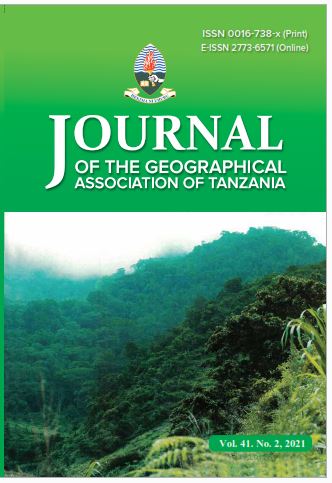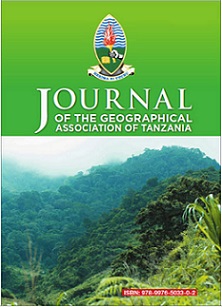Adaptation to Climate Change Impacts: The Performance of Local-based Strategies in Enhancing Agricultural Production in Semi-arid Tanzania
Abstract
This study assesses the performance of various adaptation strategies used by farmers to improve agricultural production amid changing climate. Data were collected through household survey, key informant interviews, focus group discussions, field observations, and review of relevant documents. Quantitative data were analysed using SPSS and Microsoft Excel, while qualitative data were analysed using content analysis. Results showed that, from 1990 to 2020, both mean annual minimum and maximum temperatures have increased at nonsignificant rates of R2 = 0.7569 and R2 = 0.2279, respectively; while rainfall has decreased at a significant rate of R2 = 0.0121. Such changes in climate parameters affect agricultural production through damaging crops and persistent low yields. Responding to these changes, farmers have adopted several adaptation strategies, including planting drought-tolerant crops (99.4%), changing planting dates (93.6%), planting early-maturing crops and high-yielding varieties (92.9%), mixed-crop farming (63.8%), application of manure (27.9%), and irrigation (8.3%). Planting drought-tolerant crops, changing planting dates, and the application of manure were found to be effective, and contributed to the increase of millet and groundnuts yields. Planting early-maturing crops and high-yielding varieties, and mixed-crop farming were found to be ineffective; and contributed to the decrease of maize, sunflower, and sorghum yields. In general, despite using several adaptation strategies, the majority of farmers had not improved agricultural production. This study urges that improving agricultural extension services; and providing credits and timely, relevant, and user-friendly weather information to farmers, can enhance effective adaptation to climate change.
Keywords: climate change; adaptation strategies; agricultural production; semi-arid.



